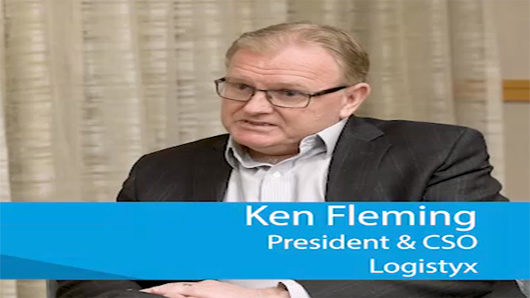
Visit Our Sponsors |
|
|
|
|
|
|
|
|
|
|
|
|
|
|
|
|
|
|
|
|
|
|
|
|
|
|
|
|
|
|
|
|
|
|
|
|
|
|
|
|
|
|
|
|
|
|
|
|
|
|
|
|
|
|
|
|
|
|
|
|
|
|
|
|
|
|
|
|

The character and definition of parcel shipping is undergoing significant change, driven by e-commerce and the demands of the omnichannel, says Ken Fleming, president and chief executive officer of Logistyx.
The character and definition of parcel shipping is undergoing significant change, driven by e-commerce and the demands of the omnichannel, says Ken Fleming, president and chief supply officer of Logistyx.
SCB: How are shipping needs changing these days, for parcel versus other types of small-scale shipments?
Fleming: It's no shock that we're seeing a heavy increase in parcel because of what we're doing with e-commerce. We're all shopping online, and as a result there’s been a natural increase in parcel shipping to the consumer. More and more companies are responding to that demand by focusing on new technologies to address that scale and growth a global basis. You buy your product online, and they’ll ship it to you anywhere in the world.
SCB: We’re hearing more about the impact and importance of the last mile. That aspect is especially challenging. But parcel shipping is a whole different universe in terms of needs and requirements, right?
Fleming: That's correct. When you think of parcel shipping in the U.S., UPS, FedEx and the Post Office come to mind instantly. Outside the country, the number of carriers and services that are available start to multiple exponentially. Either way, traditional networks aren't enough. There are lots of other options if you want same-day delivery service, when it’s a bicycle courier service, Uber or whatever the case may be. How do you manage all those options and still deliver in line with the consumer's increasing expectations? That's what's driving the complexity.
SCB: What’s the impact on manufacturers, in terms of how they make product?
Fleming: With the advent of 3-D printing, organizations are evaluating what they can manufacture on demand. Rather than store large inventories, they print products and parts. They’re doing single-unit production and distribution. That increases the use of parcel.
SCB: As parcel carriers increase the number of deliveries to the customer’s door, how are they ensuring efficiency?
Fleming: They’re having to change the way they operate. There’s traditional parcel service, where you show up, ring the doorbell, and hope the customer is home. Now, though, there's a secondary process that some companies refer to as white-glove service. If you’re delivering a bicycle, for example, they’ll take it out of the box, assemble it and take away the packaging for recycling. All that is done by the carrier, which requires a different level of service.
SCB: Are customers willing to pay extra for white-glove service?
Fleming: More often than not, you don't know you're paying for it because it's an embedded fee, part of the cost of full service.
SCB: But many customers still demand free shipping, and that’s a big attractor to e-commerce sites. How do you deal with that challenge?
Fleming: Carriers have to look at technology as a response. It allows them to do measure the performance of carriers that are fulfilling parcel needs, and provide options for that fulfillment. That's a big change.
SCB: Give me your vision of the future. What are parcel shippers going to look like in the years ahead, based on the continuing growth of the omnichannel?
Fleming: The key to omnichannel success is having visibility and access to inventory. You can't say you’re going to do ship-from-store if you don't know which products are available there. Also, you have to measure the cost of distribution, shipping and parcel delivery from each of those locations. Is the cost to serve less if it comes from a store versus a D.C.? You have to be able to make very quick calculations to choose what's appropriate to get that free-shipping methodology. Technology has to help make those decisions much, much faster. Some companies are looking at a 1/100th of a second response if they see an abandoned shopping cart.
The second factor is what's changing in last-mile. How do I get product there? There are some things coming out of the European market that I think we'll start to see in North America, like the milkman service that we all remember from years ago. The concept's coming back from a grocery delivery perspective. And if they’re delivering your food, why can't they also deliver your parcels? There’s a new network of companies that are providing that kind of access. There are also companies in Europe that are exploring the use of bicycles, possibly by utilizing pizza-delivery arrangements. There’s a lack of traditional services available to fulfill delivery — there aren’t enough drivers. Every company is looking for all potential methods for getting goods to market.
RELATED CONTENT
RELATED VIDEOS
Timely, incisive articles delivered directly to your inbox.

